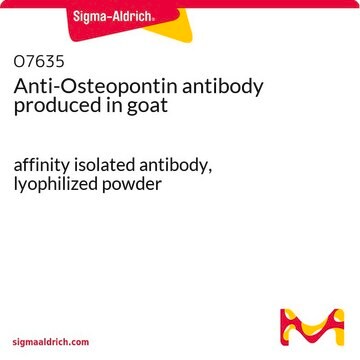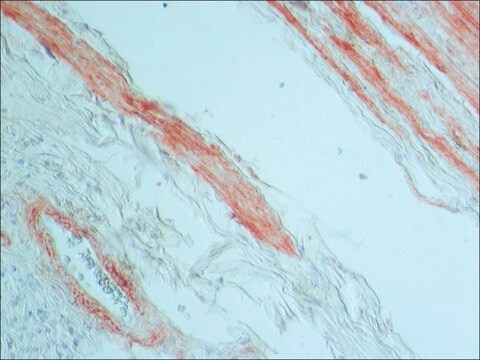B9277
Monoclonal Anti-Band 3 antibody produced in mouse
clone BIII-136, ascites fluid
About This Item
Productos recomendados
origen biológico
mouse
Nivel de calidad
conjugado
unconjugated
forma del anticuerpo
ascites fluid
tipo de anticuerpo
primary antibodies
clon
BIII-136, monoclonal
contiene
15 mM sodium azide
reactividad de especies
human
técnicas
immunoprecipitation (IP): suitable using human erythrocytes
indirect immunofluorescence: suitable using methanol-fixed human erythrocytes
western blot: 1:5,000 using human erythrocytes
isotipo
IgG2a
Condiciones de envío
dry ice
temp. de almacenamiento
−20°C
modificación del objetivo postraduccional
unmodified
Información sobre el gen
human ... SLC4A1(6521)
Categorías relacionadas
Descripción general
Monoclonal Anti-Band 3 antibody detects Band 3 protein (90-100 kD) and several lower molecular mass peptides migrating in SDS-PAGE gels in the regions of 60, 40 and 20 kD. The product specifically binds to the cytoplasmic amino-terminal protein of band 3 (the epitope is approx. 20 kD from the N-terminal end). As the epitope is not located at the erythrocyte surface, the antibody product does not agglutinate red blood cells. Furthermore, its cell surface binding cannot be detected by an indirect agglutination assay. The antibody does not localize Band 3 from horse, bovine, pig, guinea pig, dog or mouse erythrocytes, nor does it localize Band 3 from nonerythroid human fibroblast extract.
Especificidad
Inmunógeno
Aplicación
Acciones bioquímicas o fisiológicas
Cláusula de descargo de responsabilidad
¿No encuentra el producto adecuado?
Pruebe nuestro Herramienta de selección de productos.
Código de clase de almacenamiento
10 - Combustible liquids
Clase de riesgo para el agua (WGK)
nwg
Punto de inflamabilidad (°F)
Not applicable
Punto de inflamabilidad (°C)
Not applicable
Elija entre una de las versiones más recientes:
¿Ya tiene este producto?
Encuentre la documentación para los productos que ha comprado recientemente en la Biblioteca de documentos.
Nuestro equipo de científicos tiene experiencia en todas las áreas de investigación: Ciencias de la vida, Ciencia de los materiales, Síntesis química, Cromatografía, Analítica y muchas otras.
Póngase en contacto con el Servicio técnico





